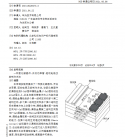Seems like telecom business is still stable, which is good.
Are there any fabs Huawei could purchase to make their own chips? Cansemi maybe?
Seems like telecom business is still stable, which is good.
From what I heard, Huawei has enough base stations chips to last at least until 2024.You need a lot less chips for base stations that you would need to make smartphones. But eventually the supply will run out and they are stuck with what chip supply they do have. I think Huawei will need to start making their own chips soon.
China had 1.43 million 5G base stations total last year. Compare that with amount of smartphones.
China built 654,000 base stations in 2021. But they shipped 266 million 5G phones.
While a base station does use a lot more semiconductors than a smartphone, it is probably like an order of magnitude more semiconductors per unit. Not two and a half orders of magnitude.
It's called the loongson. Apparently it's quite disliked on chinese socmed and a lot of people say it's useless
Weird, i always though that a base stations would required more chips than an smartphone. I do know that the reason smartphones SOC require the latest node process is because smaller gates can switch with less power, so you can pack more in an SOC and no decrease on battery life. Base stations in other hand power is not an "big" issue, so Huawei is betting in compound semiconductors like GaAS, GaN, SiC, advanced packaging, photonics and software algorithms to get more performance out of their products without the need of smaller process nodes. In other words Huawei is trying to innovate the sh*t out their situation until China catch up in semiconductor manufacturing.You need a lot less chips for base stations that you would need to make smartphones.


Like I said, you need more chips in a base station, but the market for base stations in terms of units sold is much smaller then the one for smartphones. Like 500x smaller. A base station does not have 500x more chips than a smartphone.
Indeed. A lot of chips go into a basestation than a mobile phone: FPGA or ASIC, memory, converters (inverter, rectifier), power amplifiers, power management IC, RF, analog, RF filters, wireless communication, etc. chips. I'm sure I'm missing some additional chips in the list I provided.Also base station don't need 7nm chips, 14nm even 28nm is totally fine
Can you give us the link that people says Loongson is useless ?
I thought it was quite good, especially 5000 series. My understanding is that most Govt desktop use Loongson also top Chinese Supercomputers use it as well, including Beidou sats
Also latest Loongson includes "LoongArch" Chinese ISA
I believe Loongson will get better and better in fast pace in this environment
